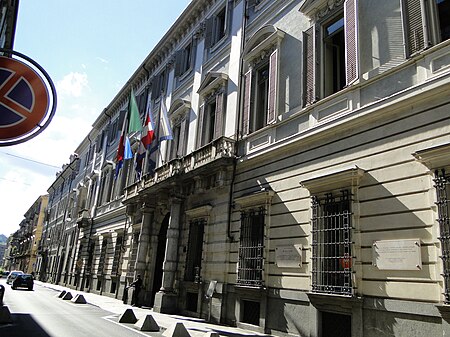Metropolitan City of Turin

The Metropolitan City of Turin (Italian: Città metropolitana di Torino, Piedmontese: Sità metropolitan-a 'd Turin) is a metropolitan city in the Piedmont region, Italy. Its capital is the city of Turin. It replaced the Province of Turin and comprises the city of Turin and 311 other municipalities (comuni). It was created by the reform of local authorities (Law 142/1990) and established by the Law 56/2014. It has been officially operating since 1 January 2015. The Metropolitan City of Turin is headed by the metropolitan mayor (sindaco metropolitano) and by the metropolitan council (consiglio metropolitano). Since 5 June 2016, Chiara Appendino has served as the mayor of the capital city, succeeding Piero Fassino. The largest Metropolitan City of Italy, it is the only one to border a foreign state, France.
Excerpt from the Wikipedia article Metropolitan City of Turin (License: CC BY-SA 3.0, Authors, Images).Metropolitan City of Turin
Via Giovanni Francesco Napione, Turin Vanchiglia
Geographical coordinates (GPS) Address Nearby Places Show on map
Geographical coordinates (GPS)
| Latitude | Longitude |
|---|---|
| N 45.0667 ° | E 7.7 ° |
Address
Via Giovanni Francesco Napione 17
10124 Turin, Vanchiglia
Piedmont, Italy
Open on Google Maps











